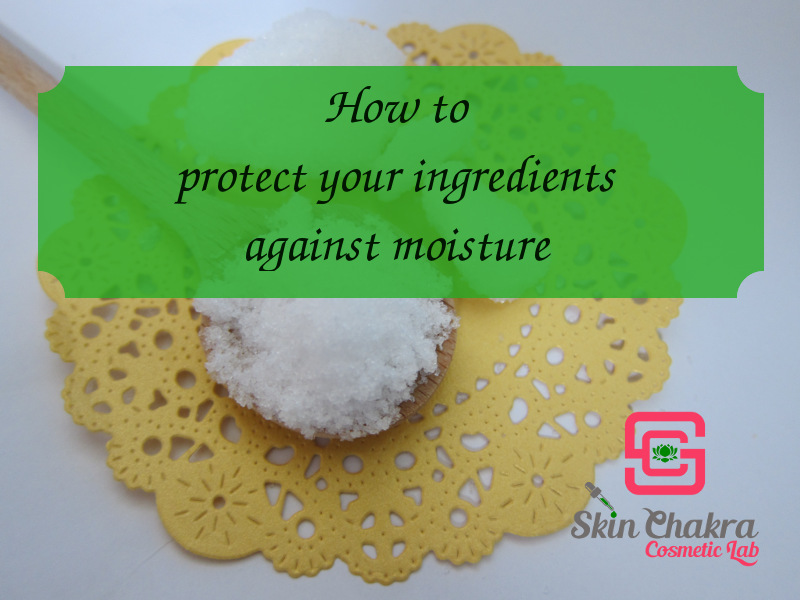
Donnerstag, 6. Juli 2017
How to protect your products/ingredients from humidity

One of our first claims and aims in making skincare is to "moisturize" the skin. We love "humectants" and "moisturizers". A "dry" skin looks chappy, tired, unhealthy and stressed and is susceptible to environmental stress.
Yet "moisture" and "humidity" are not quite friendly to skin care ingredients and many skincare products (and labels). Almost all of our cosmetic ingredients should be kept in a "dry" place. Liquid ingredients might not be quite susceptible to humidity but "dry" ingredients such as dired herbs, clays, pigments, powder extracts (like aloe leaf extract) are susceptible to humidity and not only might change their efficacy and appearance but they might become contaminated upon absorption of moisture (remember: reducing the water activity is a method of self-preserving ingredients and products).
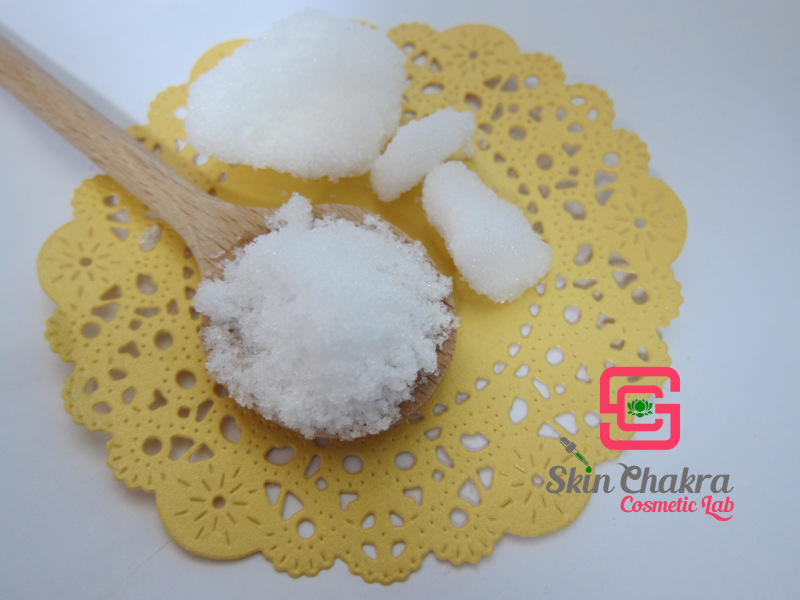
This is the same for many of your finished products. An emulsion in a well closed jar or bottle might not be quite sensitive to humidity (except for the label and external cardboard packaging) but a clay mask, herbal facial tea, a glycerine soap, bath salts and fizzies or your unpreserved balms, butters and scrubs are quite susceptible to humidity. This is why testing the stability of the finished product under different relative humidity conditions is so important.
In our modern global business, when you ship ingredients and products from one part of the world to the other, changes in temperature and humidity during storage, transport and at the consumers' end should be well considered.
Let me show you one live example. We have a dried organic aloe vera leaf extract on our online shop. This is one of our most expensive products which we sell from a quantity of 10 gr. In our lab and stock, we keep this powder in a well closed container in a cool, dark and dry place. The average R.H. in our lab is 22-35% which is quite tolerable. Yet this powder, even kept in a closed zip bag, when left on the lab counter and out of its desiccant box, turns to an ungly, brown, glue-like paste which is good-for-nothing.
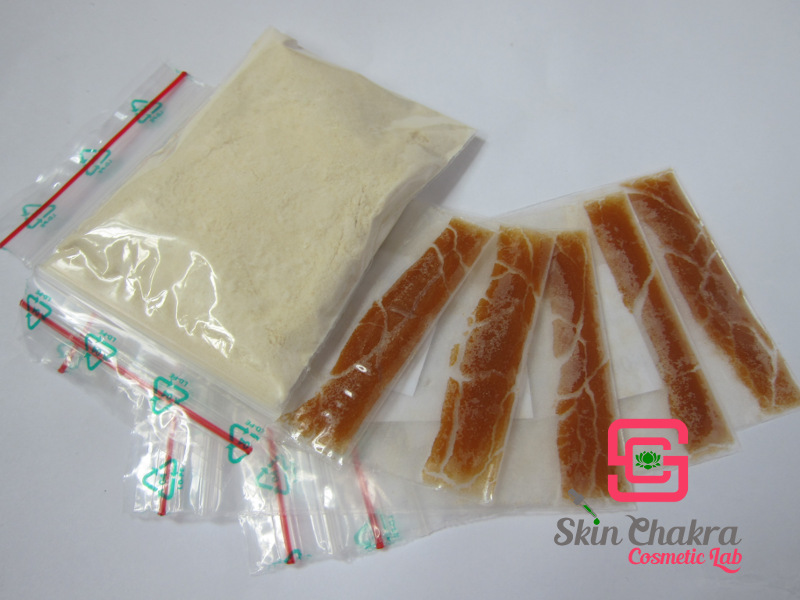
We ship this ingredient to 40 countries in the world, some of them having tropical conditions and very high relative humidity. To avoid any shock and disappointment of our customers as they receive their parcels, we ship this ingredient together with a small sachet of a desiccant.
What is a desiccant?
A desiccant is, in simple words, the opposite of a humectant (or like a humectant?). It is a material that keeps the material in its surrounding "dry" and "dehydrated". You know from your everyday life that "salt" is a desiccant. It is used to pull moisture from meat for example and hence for self-preserving meat. Rice is another desiccant. You've certainly seen rice grains being added to salt in humid regions. Rice acts as a desiccant and prohibits clumping of salt.
Have you ever noticed those small, cute sachets in the cardboard box when you purchase leatherware (shoes, bags) or electronics? These sachets are filled with desiccants and keep your goods dry and intact during the storage and transport.
Commercial desiccants
"silica gel" is the most widely used desiccant today. This is a porous material made from silicone dioxide. If you open up one of the desiccant sachets you receive with your goodies, you'll see these transparent/transluscent granules (do not touch them without any gloves). These granules absorb humidity and keep your goodies dry.
Silica gel is the very same material decorators and florists use to dry flowers and leaves and it is often used alone or in combination with other substances in cat litter.
Once the granules are saturated with water, they wouldn't absorb any more humidity (logic). They could be regenerated by heating them in an oven at around 120 oC for a couple of hours. Once dried again, they could be re-used. They have almost an infinite life-cycle if used correctly.
Coating
The granules you receive in sachets are uncoated and almost colourless. Most often and when they are used in balk (laboratory, florists, etc.) the granules are coated with an indicator so that they change colour as they absorb humidity and become deactivated.
As a chemist, I have worked all my chemist's life with blue silica gel. It has such a pretty lovely colour you completely forget it is poisonous (we'll come to that later). The granules are coated with some cobalt derivatives that gives them this beautiful cobalt blue colour. As the granules absorb water and become saturated with water, the cobalt complex changes its structure and becomes light pink. Put the granules in the oven for a few hours and they become blue again and you can use the granules again.(We don't have any in our lab to make photos for you, sorry)
Cobalt was classified as toxic and carcinogenic in the EU in 2000. It is not used anymore in the EU but if you are outside of the EU, you may still find blue silica gel in circulation (specially in chemical laboratories).
In the EU, they use methyl violet as the indicator now. The granules are orange when they are active and dry and turn to colourless as they become saturated with water.
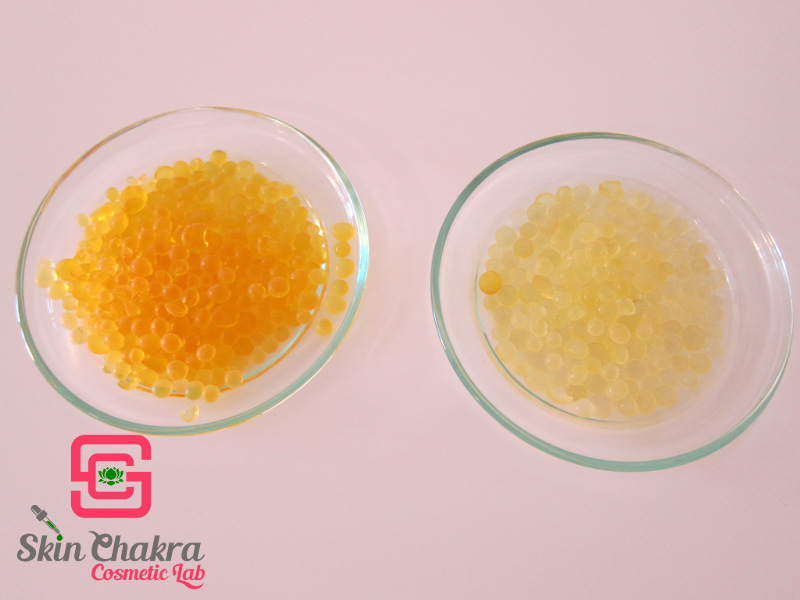
What's the matter with silica gel?
Silica gel on its own is a very inert material. Although there are reports of skin sensitizations, it is approved by FDA and the EU even for food applications (It has a GRAS status in the US).
The problem is:
1- It is quite an stable material, meaning it is not biodegradable and it couldn't easily be discarded by consumer in the domestic garbage
2- To avoid contamination and mouldering, silica gel granules are often treated with DMF (dimethyl fumarate) which works as a preservative and fungicide ingredient. DMF is used in many consumer goods (furniture, leatherware) as a fungicide but since there has been many cases of contact allergy, it is banned in the EU in consumer goods (and in imported goods). If you're living outside EU, it is very possible that the sachets you receive in your goodies are treated with DMF.
As manufacturers of sustainable and green consumer products, you certainly don't want to put these sachets in your parcels or keep your ingredients adjacant to silica gel (even if your product doesn't come into direct contact with the material).
So what?
We could source some natural desiccants that are approved for application in food, pharmaceuticals and cosmetics. These mainly contain of a clay (which is sterilized by heating) in a non-woven sachet. Clays are environmental friendly, natural, non-toxic and the best of all is: you can easily discard with in your household rests.
We have been testing a supplier and piercing their very friendly and open-to-questions sales manager. This is what we could dig out of him:
1- The desiccant material is a kind of bentonite, quite environmental friendly, non-toxic and easy to discard
2- The nonwoven bag shall not come into direct contact with your product, let's say your dried herbs for a facial steam. You can put the desiccant in an outer bag (a zipper bag for example) and put this in your jar or container (we tried this method and it worked perfectly).
3- If you are crafty like our Swetti, you may even want to sew/make your own cushions for your desiccants
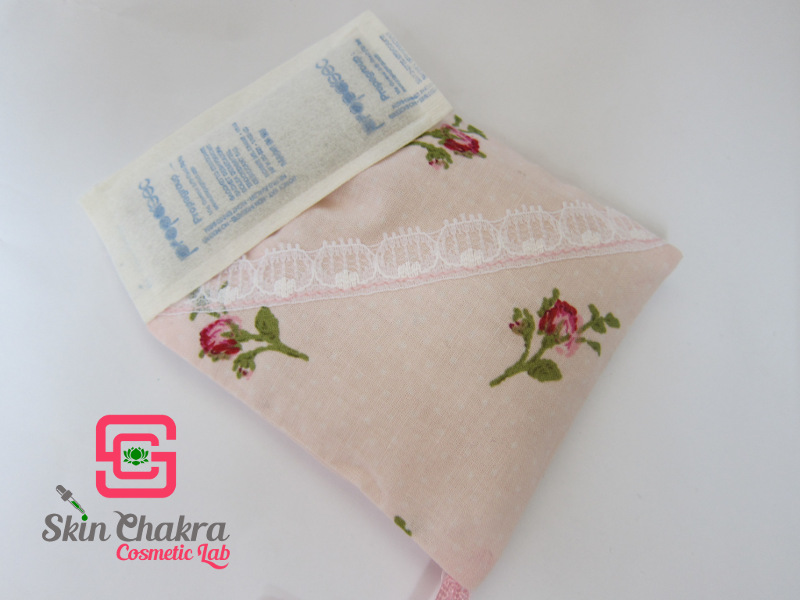
4- Our supplier does not recommend re-using and re-generating the clay (the way we do it with silica gel). They have the opinion that the clay loses its efficacy and since there is no preservative added to the clay it is even possible that by re-suing the clay it becomes contaminated over time.
5- Since there are no indicators here, how would we know that the material is saturated and should be replaced with a new sachet?
It depends on the relative humidity (R.H.) how long it takes for a sachet to become saturated and ineffective. We need to weight the sachet and when it weights 17-18% more than its original weight, it is saturated with water and should be replaced with a new sachet.
These sachets are quite an affordable, effective and sustainable method to protect your ingredients (and some of your products) against humidity. You can make your own make-shift desiccants by applying rice powder or a kind of clay or another absorbent material but make sure you protect your ingredients and your absorbents against contamination.
I hope I could answer some of your questions regarding humidity and storage of raw material. As always, you can send me your questions per mail or post them to our Facebook page.

